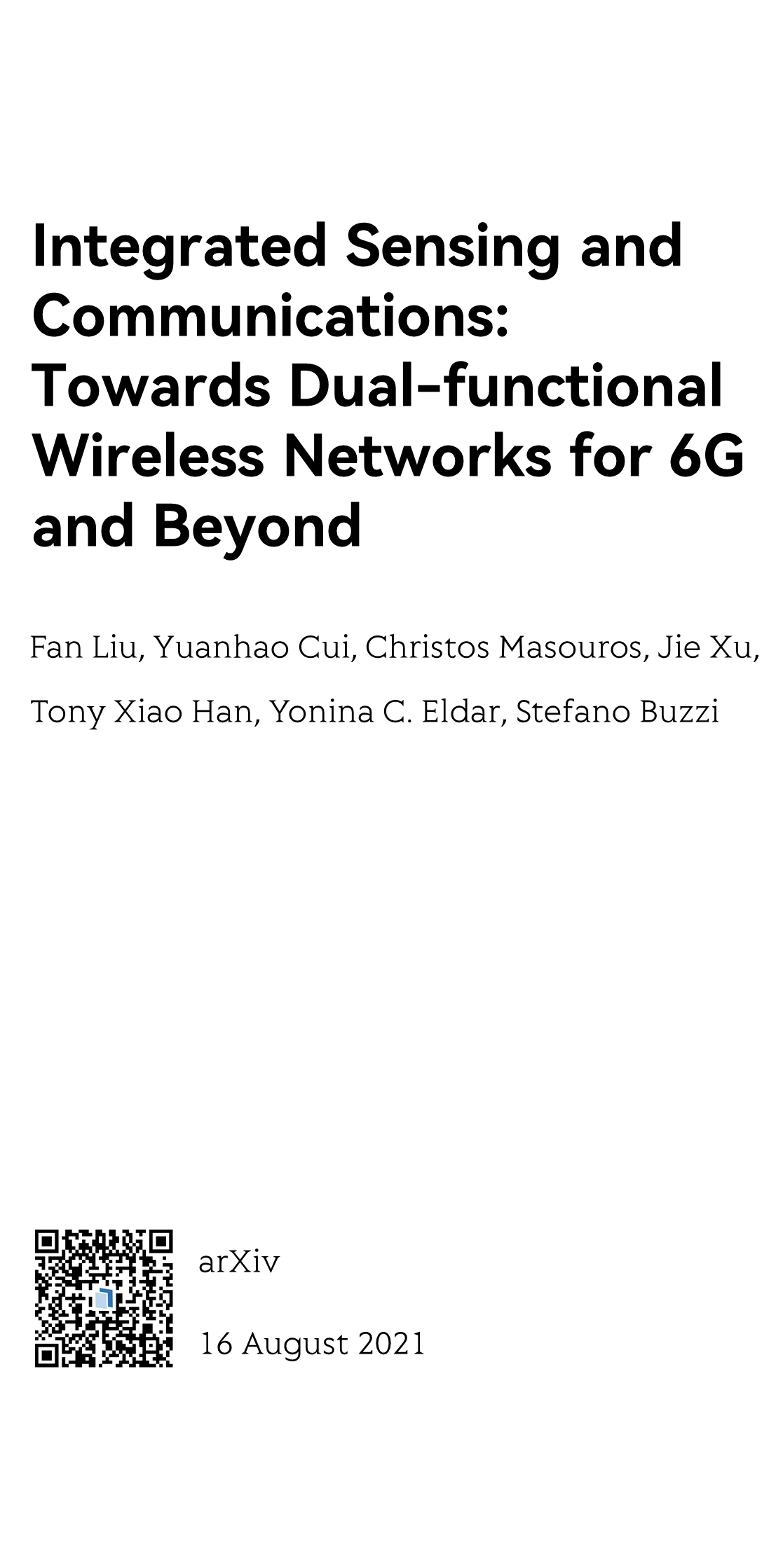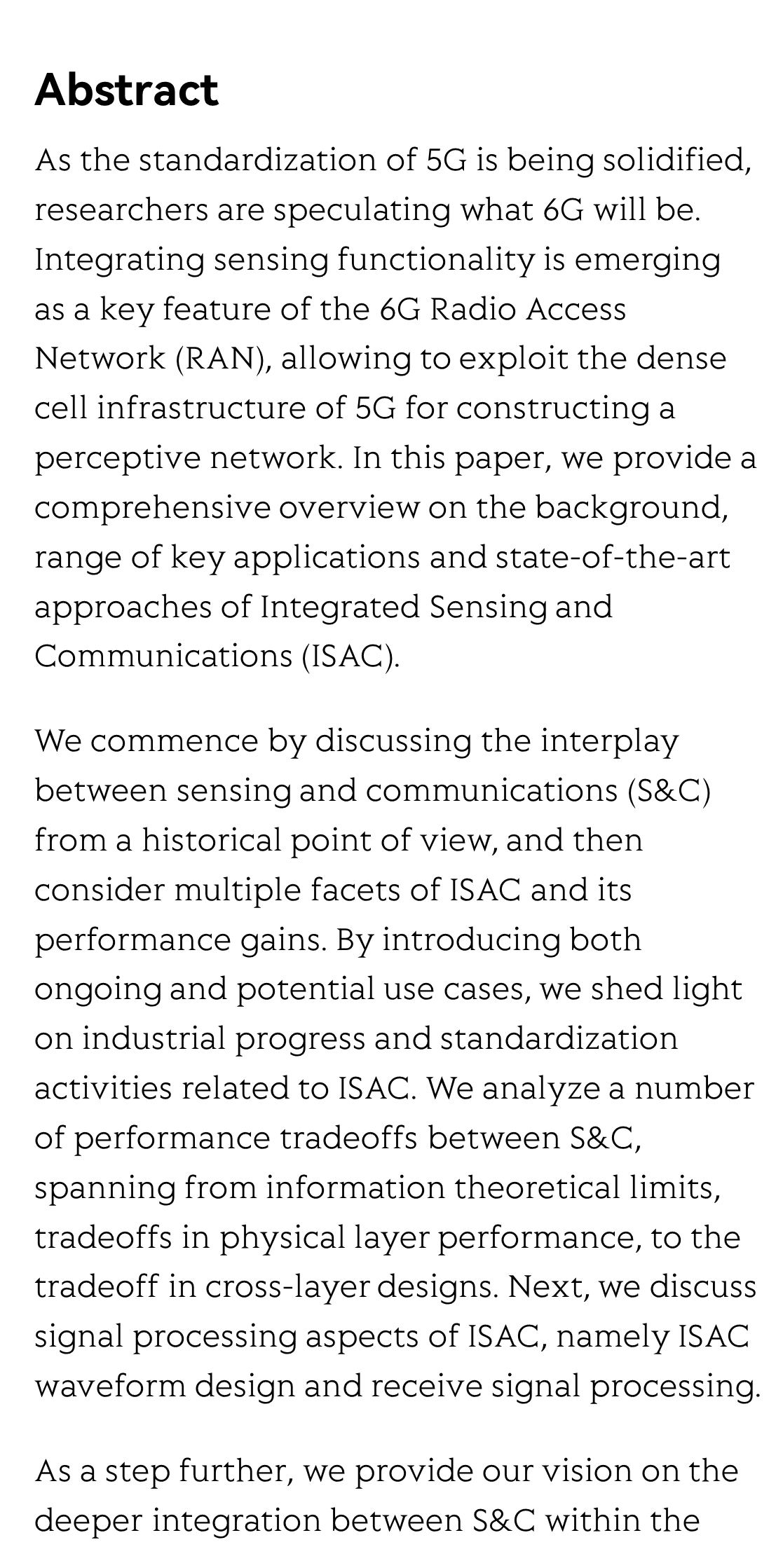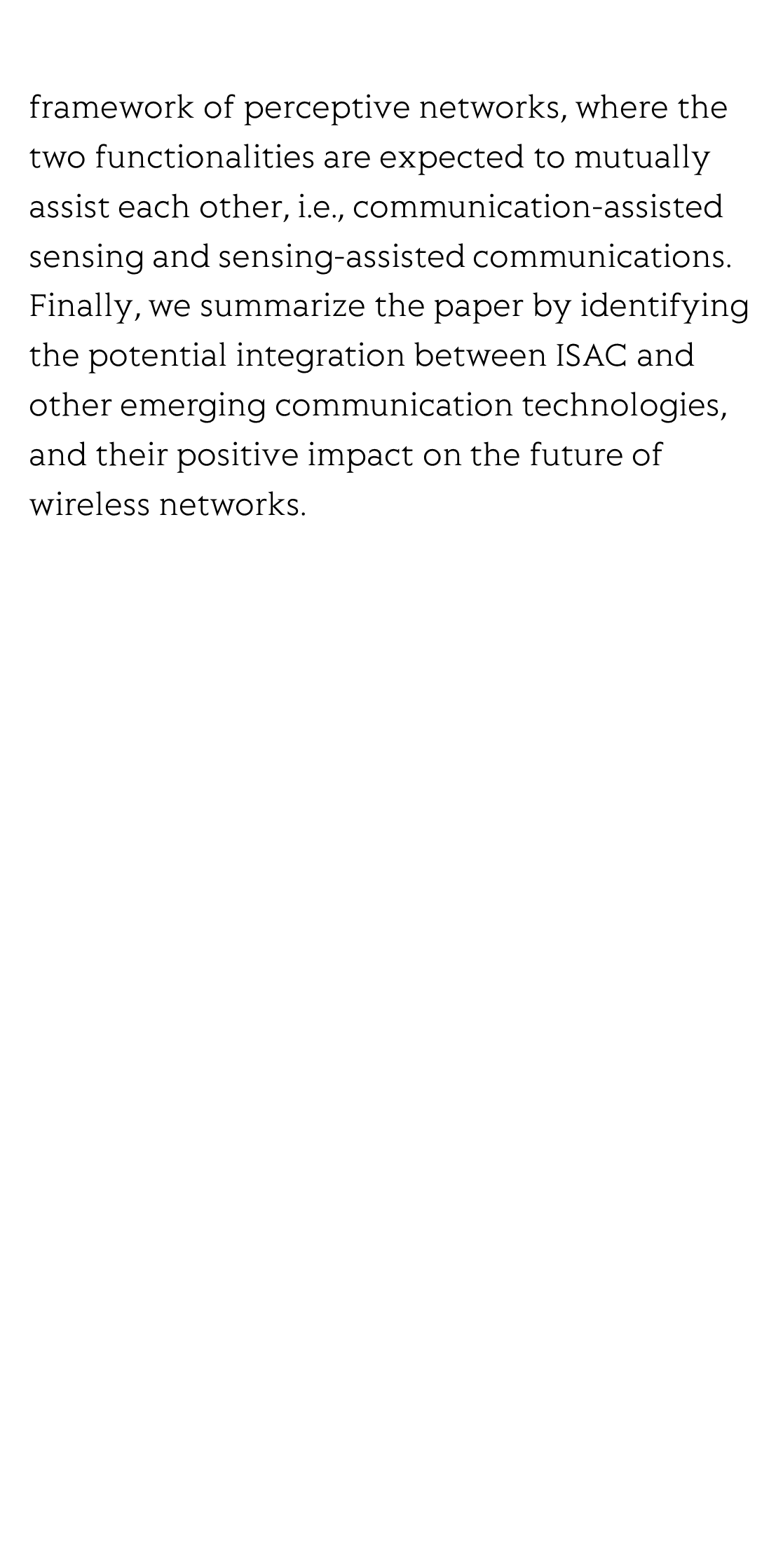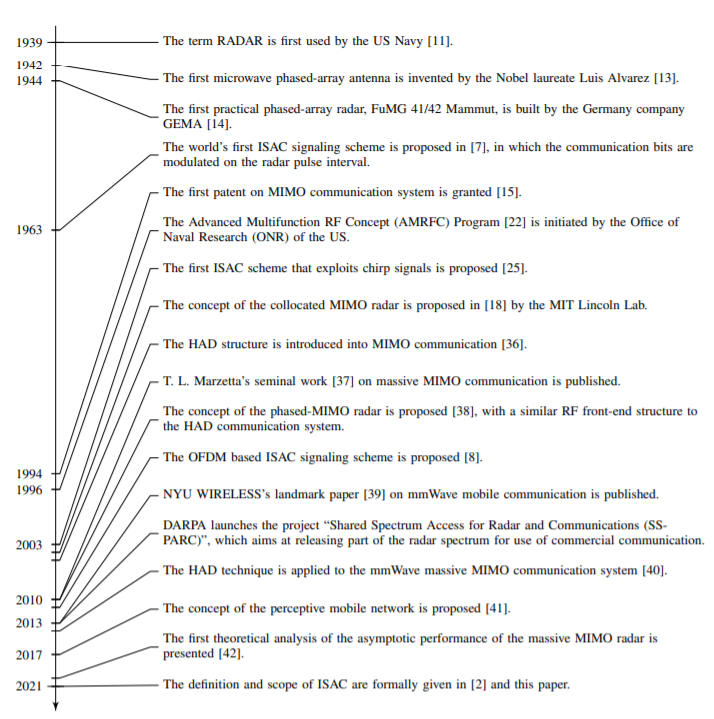(Preprint) Integrated Sensing and Communications: Towards Dual-functional Wireless Networks for 6G and Beyond
Fan Liu 刘凡 ¹, Yuanhao Cui 崔原豪 ², Christos Masouros ³, Jie Xu 许杰 ⁴, Tony Xiao Han 韩霄 ⁵, Yonina C. Eldar ⁶, Stefano Buzzi ⁷
¹ Department of Electrical and Electronic Engineering, Southern University of Science and Technology, Shenzhen 518055, China
中国 深圳 南方科技大学电信工程系
² Department of Communication Engineering, Beijing University of Posts and Telecommunications, Beijing, China
中国 北京 北京邮电大学通信工程系
³ Department of Electronic and Electrical Engineering, University College London, London, WC1E 7JE, UK
⁴ Future Network of Intelligence Institute (FNii), School of Science and Engineering, The Chinese University of Hong Kong (Shenzhen), Shenzhen 518172, China
中国 深圳 香港中文大学(深圳)未来智能网络研究院,香港中文大学(深圳)理工学院
⁵ Huawei Technologies Co., Ltd
华为技术有限公司
⁶ Faculty of Mathematics and Computer Science, Weizmann Institute of Science, Rehovot, Israel
⁷ Department of Electrical and Information Engineering, University of Cassino and Southern Lazio, I-03043 Cassino, Italy, GBB Wireless Research, I-80143, Napoli, Italy
arXiv, 2021-08-16
Abstract
As the standardization of 5G is being solidified, researchers are speculating what 6G will be. Integrating sensing functionality is emerging as a key feature of the 6G Radio Access Network (RAN), allowing to exploit the dense cell infrastructure of 5G for constructing a perceptive network. In this paper, we provide a comprehensive overview on the background, range of key applications and state-of-the-art approaches of Integrated Sensing and Communications (ISAC).
We commence by discussing the interplay between sensing and communications (S&C) from a historical point of view, and then consider multiple facets of ISAC and its performance gains. By introducing both ongoing and potential use cases, we shed light on industrial progress and standardization activities related to ISAC. We analyze a number of performance tradeoffs between S&C, spanning from information theoretical limits, tradeoffs in physical layer performance, to the tradeoff in cross-layer designs. Next, we discuss signal processing aspects of ISAC, namely ISAC waveform design and receive signal processing.
As a step further, we provide our vision on the deeper integration between S&C within the framework of perceptive networks, where the two functionalities are expected to mutually assist each other, i.e., communication-assisted sensing and sensing-assisted communications. Finally, we summarize the paper by identifying the potential integration between ISAC and other emerging communication technologies, and their positive impact on the future of wireless networks.
Flicker minimization in power-saving displays enabled by measurement of difference in flexoelectric coefficients and displacement-current in positive dielectric anisotropy liquid crystals
Junho Jung, HaYoung Jung, GyuRi Choi, HanByeol Park, Sun-Mi Park, Ki-Sun Kwon, Heui-Seok Jin, Dong-Jin Lee, Hoon Jeong, JeongKi Park, Byeong Koo Kim, Seung Hee Lee, MinSu Kim
Opto-Electronic Advances
2025-09-25
Dual-frequency angular-multiplexed fringe projection profilometry with deep learning: breaking hardware limits for ultra-high-speed 3D imaging
Wenwu Chen, Yifan Liu, Shijie Feng, Wei Yin, Jiaming Qian, Yixuan Li, Hang Zhang, Maciej Trusiak, Malgorzata Kujawinska, Qian Chen, Chao Zuo
Opto-Electronic Advances
2025-09-25







